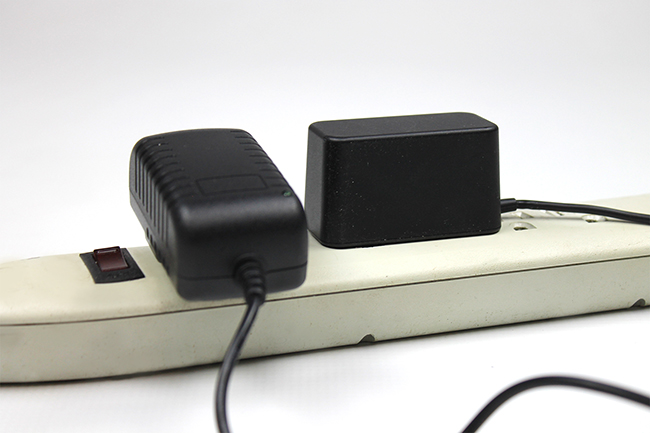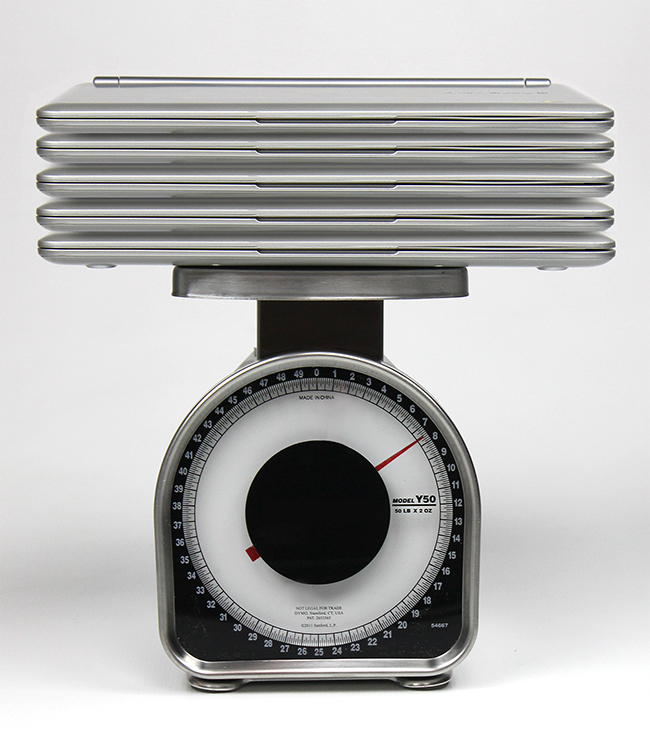Updated on May 3, 2023
Schools that invest in mobile devices do so with careful consideration, as they should. It’s a big investment to make and one that must fall in line with a school’s budget limitations along with its educational needs.
This finds some school administrators and decision makers for educational mobile devices contemplating do-it-yourself (DIY) carts that can capably but inexpensively charge and store these devices. But what are the main considerations as to whether a school should go this route?
As your Cart Guru, I’m here today to guide you through my top four considerations when assembling DIY components for charging and storage solutions for mobile devices. I do this first and foremost with safety in mind, along with functionality and other worthy aspects. So, let’s get started, shall we?
1. Safety Always Comes First
Electrical Management
As has already been mentioned, safety comes first when looking into any DIY charging and storage solutions, and even in manufactured products.
While charging stations and laptop carts are essential for many schools, when it comes to these items being designed and constructed by amateurs, a host of safety concerns can arise. Even with the best of technologies, accidents can and do happen, especially in DIY tools that require electrical designs, implementations, and day-to-day use.
Often times, the amount of power that devices draw is underestimated. And not knowing how to control the cart’s power can result in a fuse tripping, which in turn can cause damage to devices or other electronics located throughout the school. Worse yet, students or staff members could suffer serious injury from an electric shock.
Manufactured carts are usually surge protected. And manufacturers of device charging and storage solutions must adhere to industry safety standards.
Cable Management
Imagine a DIY cart with wires or cables scattered around. The more they are touched, moved, or bumped, the more likely an electrical shock can occur, or the unit can malfunction.
There’s nothing harder to control than cables and wires. It’s a messy job. Tripping hazards abound when cables are not contained or managed correctly. Engineers who professionally design storage and charging solutions keep the cables neatly organized, careful to store cables within the product.
Again, those who design these products for manufacturers are held accountable to special regulations and design patterns that ensure the utmost in consumer safety. Manufactured carts most typically wire all devices to one or two power cables.

Charging cords for certain devices can make it challenging to charge many devices together. Shown above, one charger can take up several spaces on a standard, surge protected, power strip.
Ventilation
Many DIY cart storage units are built with materials that may be inefficient at circulating air. Carts produced by manufacturers not only guard against laptop and mobile device theft, but their ventilation systems keep laptops at cooler temperatures. Overheating can wear down devices faster, lessen their functionality, and even cause device batteries to work less efficiently and effectively.
It is essential to ensure that there is adequate ventilation before storing or charging any devices within a DIY cart. Keep in mind that carts on the market typically contain ventilation systems that are built into the cart walls and shelving, providing adequate air flow.
Weight Distribution
Placing multiple devices into a storage unit that will not support or distribute their weight appropriately is simply unsafe. If the unit tips over, collapses, or malfunctions under the weight of a group of laptops, the devices could be damaged or worse—students or staff members could be injured!
Unequal weight distribution can occur when mobile devices and laptops are placed in DIY products, which also lends itself poorly to properly securing and storing these devices.
On the other hand, reliable manufactured carts go through extensive testing to ensure that they will support and distribute the weight of the number of devices that they are meant to hold. This makes them a safer choice than DIY carts.

While the weight of a single device may not be much, it can really add up. Especially with enough devices for each student to have their own.
2. Security Features & Materials
We’ve touched upon electrical wiring and cabling used in manufactured storage and charging solutions for school’s mobile devices and laptops, as well as the problems that schools can face when DYI electronics go wrong.
Now let’s consider what can happen when the wrong materials are used to construct a DIY solution of this type, or if the products are not equipped with proper security.
First it’s important to note that experts who construct and design these technologies use only those materials that are tried, true, and tested. It’s not unheard of for DIY products to be constructed with cheap, flimsy, or otherwise inadequate materials, especially when cost is valued over secure materials.
This means that security costs extra and that attaching locking components onto a DIY cart might prove difficult. As far as locking security, carts sold by vendors typically use a variety of locking methods.
3. Damage to Devices & Cables
Devices
When a large amount of money is spent on devices, it's important to protect that investment. Schools may or may not budget for expensive replacements. In the instances that they don’t, it’s especially important to protect mobile devices and laptops used in classrooms in order to prolong their “shelf lives".
Even simple movements such as removing devices from charging or storage carts, or placing the devices back into the carts may result in wear and tear causing significant damage.
It is also important to consider that when the devices are being stored, for example, in a makeshift milk crate, people may treat them differently than if they are stored in something that looks like it is made to store a valuable piece of technology.
Power Cables
The lifespan of power cables can be significantly reduced when they are not properly stored. DIY classroom carts must be designed with this in mind.
Some manufactured carts do this by providing a methodological way to arrange the charging cables and AC adapters. Cable management is a linchpin feature in JAR Carts, which keep cables secured in the back side of the cart and clipped to pull-out trays, reducing friction and keeping them in place, right where they’re needed.
3. Transporting
Some DIY carts are built to be static, whereas others need to be mobile. Carrying the unit is an option; however, this could cause physical harm depending on the size and weight of each unit. The weight of the devices alone really adds up. Likewise, carrying a unit could lead to dropping it, thus causing damage to the unit or the devices.
Another option is to purchase wheels or casters that are durable enough to transport the weight of the cart and navigate various floor surfaces taking into consideration how it needs to be used.
If I may, your ever-present Cart Guru recommends investing in reliable and flexible casters as they will prolong the lifespan of the cart and help avoid accidents. In addition, proper wheels make carts easier to push and easier to stop, causing less strain on the person navigating them.
4. Functionality
Versatility
According to the Lead Commission, a collaborator with the Department of Education and the Federal Communications Commission regarding digital growth in education, most schools tend to cycle through devices in six years as opposed to the three-year inventory-refresher recommendation.
It is with certainty that new models and product lines will come out every year, so it is worthwhile to invest in a solution that will accommodate future devices and will be durable and versatile enough to do so. A durable and versatile manufactured cart can last a decade or more and may even hold resale value.
While DIY carts save on budget and logistics constraints in the short run, most DIY carts do not consider technological model upgrades and expansions. Instead, they typically support certain devices, which can be somewhat limiting and more costly than that of a manufactured storage and charging unit in the long run.
Charging
Inefficient or improper charging methods can degrade any device’s battery. A DIY charging system might also pose a safety hazard, as power needs to be accurately managed.
Carts on the market are built to handle the amount of power necessary to charge devices of a specified capacity. Carts which utilize intelligent charging can even sense which devices have the least charge and direct power to them, maximizing the availability of the devices.
Remote Management/Syncing
Having to update or sync each device individually is frustrating and consumes way too much time. On top of that, it costs much more to pay someone to do these updates manually. This Cart Guru hasn't seen many DIY carts that integrate syncing or remote management with charging.
However, there does exist on the market carts that accommodate a CAT5 wire for remote management or USB hubs for syncing devices simultaneously.
So, is it worth it?
When weighing the associated risks and also the relative longevity of a DIY classroom cart, you may find that it just isn’t worth it. The materials associated with building a truly effective, safe, secure charging and storage solution may be comparable to the cost of a manufactured mobile classroom cart, and this doesn’t include challenges with charging.
Teachers have become very resourceful when it comes to homemade resources and classroom management tools, but some things may be better left to the experts. Whenever possible, purchasing a reliable, trustworthy cart is the safest bet for you, your school, your students, and for the optimal digital learning environment.
Outfit Your Classroom and Central Areas with Convenient and Affordable Charging Stations
View our new Adapt4 charging stations for a reliable, easy-to-use, and affordable solution to classroom space management
Let’s Tech! You can submit any comments, questions, or insights to your Cart Guru below.
References and Examples of DIY Carts
iPad cart, $320
iPad cart, $150
iPad cart, $60

